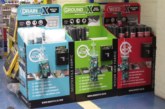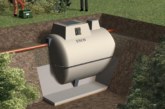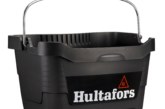
Gary Perry, MD of Altecnic, discusses the changes coming in January to CE marking as a result of the UK leaving the EU and the implications it will bring for merchants and their customers.
You will probably have heard, seen and know about ‘CE marking’. It appears on many products that are traded on the single market in the European Economic Area. The letters ‘CE’ mean that:
- The manufacturer has checked that these products meet EU safety, health or environmental requirements
- The product complies with EU legislation
It also allows free movement of products within the European market.
New UKCA marking
With the UK leaving the EU, the Government has created a new UKCA (UK Conformity Assessed) marking which will apply to most goods currently subject to the CE marking for items that are being sold in Great Britain.
The new UKCA marking can be used from 1 January 2021 and to allow businesses time to adjust to the change, they will still be able to use the CE marking for a further year, and, in the majority of cases, until January 2022.
However, the UKCA marking will not be recognised on the EU market or in Northern Ireland. So, products currently requiring a CE marking will still need one for sale in the EU from 1 January 2021.
Goods can carry both the CE and UKCA markings so long as they are fully compliant with both UK and EU regulations.
When the UKCA marking will be used
Companies will need to use the new UKCA marking after 1 January 2021 if all of the following apply:
- the product is for the market in Great Britain
- it is covered by legislation which requires the UKCA marking
- it requires mandatory third-party conformity assessment
- conformity assessment has been carried out by a UK conformity assessment body and the conformity assessment files haven’t been transferred from the UK body to an EU recognised body before 1 January 2021
However, this does not apply to existing stock, for example if the product was fully manufactured and ready to place on the market before 1 January 2021. In this situation, the goods can still be sold in Great Britain with a CE marking even if covered by a certificate of conformity issued by a UK body.
From January 2022, the UKCA marking must, in the majority of cases, be affixed directly to the product.
What you need to look out for
As a result of these changes, merchants and installers alike will need to remain vigilant that the products that they sell and buy are marked correctly and therefore safe and legal to install in the UK. Without the proper marking, the products being used may not be manufactured to high or legal standards.
What we are doing
Here at Altecnic, we pride ourselves on only supplying approved and accredited products into the plumbing and heating market. To this end, we are working with all relevant industry partners to keep ahead of the changes in product marking regulation so we can assist our customers through the transition. Our aim is to make the switch from CE marking to UKCA markings a smooth one for all our stakeholders.
To find out more about the UKCA marking and the latest information, head to the Government’s Business and Industry web pages by heading to: https://www.gov.uk/guidance/placing-manufactured-goods-on-the-market-in-great-britain-from-1-january-2021
For more information on Altecnic’s range of products and services and to download its latest Product Guide, enter https://www.altecnic.co.uk/images/pdf/Altecnic_Product_Guide_Domestic.pdf in your browser.
Following the news that Altecnic has recently been awarded ISO 45001:2018, the international standard for occupational health and safety (OH&S) management systems, the company has continued to add to its portfolio of more than 5,000 product lines with the launch of a new Thermostatic Mixing Valve (TMV) that enables the “thermal disinfection process to be brought up to the tap or shower head, reducing the time and cost to remove the potential for bacteria growth such as legionella”.
The new Mixcal Careflo Plus TMV is said to remove the need to take off the TMV to ‘flush’ out the system, making the process quicker and more efficient.
TMVs keep water temperatures safe by blending hot and cold water and maintaining it at a constant level, with the recommended temperature range for delivery of safe hot water where a TMV is installed is 38-44°. To prevent the growth of legionella bacteria, water should be stored below 20° or above 60°.
As TMVs allow for high temperature water storage, the risk of bacterial growth is reduced but not eliminated. With Altecnic’s new TMV, using a special tool and the manual override function allows thermal disinfection to be performed through to the outlets, enabling a complete — rather than a partial — flush. This full thermal disinfection further helps prevent the growth of harmful bacteria.
The Mixcal Careflo Plus TMV has been designed and made to meet the requirements of BS 7942:2000 and the NHS model engineering specification D08 for use in healthcare settings, hospitals, care homes and schools.
For detailed information on the new Mixcal Careflo Plus TMV, go to https://www.altecnic.co.uk/domestic/plumbing-heating/thermostatic-mixing-valves/1196/









